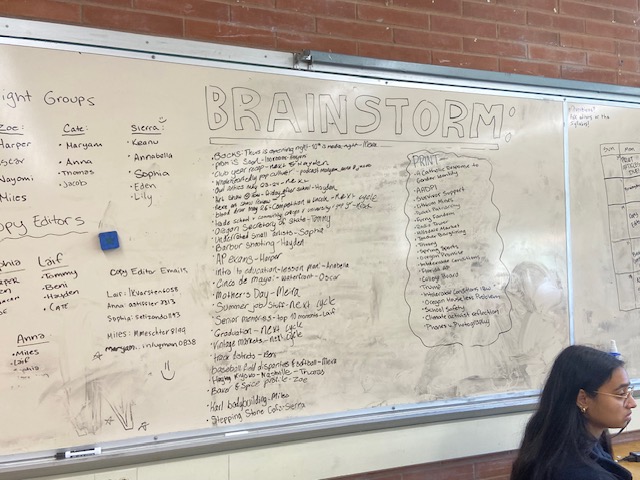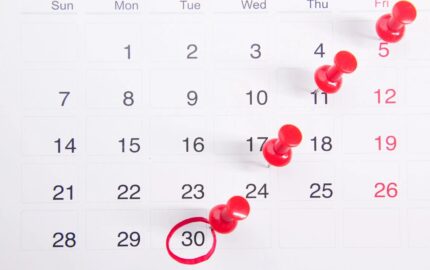“We’ve got a paper to get out.”
That's the matter-of-fact directive from Zoe Toperosky to a roomful of reporters and editors. She is talking through a mask in that just-loud-enough, crisply enunciated way that veteran mask-wearers have perfected during the past three years.
She looks across the newsroom, past more than a dozen of her colleagues. Most are busy working on their laptops with that manic look of reporters on deadline. Others, heads bent, are marking up an initial proof of the paper. Behind them hangs a whiteboard with 20 stories listed under “Brainstorm” for this current issue. Among them:
- A Catholic Response to Gender Identity Theory
- Survivor Support
- Oregon Houseless Problems
- Teachers’ Collective Bargaining
Here's the surprise: Zoe is a 17-year-old high school junior, one of four editors of her school’s newspaper, The Headlight. The newsroom is a classroom at Ida B. Wells High School in Portland, Oregon.
I am here at the school, fly-on-the-wall, watching — and marveling at — these fledgling journalists. I am marveling at their seriousness of purpose and the scope, and depth of the issues they are choosing to write about. My high school newspaper, The Spotlight in Levittown, New York, shone its light on such weighty concerns as the assignment of hall lockers, the upcoming Senior Carnival and the newly formed boys’ lacrosse team. I have a vague memory of contributing a scathing editorial on the unfairness of the school’s “no sandals” dress code policy.
I am marveling also that Ida B. Wells even has a newspaper — and journalism classes to boot. For most of the last century students at virtually every high school in the country published a newspaper. It was often a source of school pride, not perhaps as exciting as a winning sports team but part of the vibrant life of the school. As The National Federal of State High School Associations put it:
Being the school’s newspaper editor…was a coveted position — one that carried with it quite a bit of responsibility and the matching amount of respect among one’s peers. Being a member of the newspaper staff came with prestige…
(To be clear: This was the nerd version of prestige. The real prestige at my school was enjoyed by the head cheerleader and the captain of the football team.)
But for years now, journalists, scholars and teachers have been lamenting the decline of student newspapers. A 2022 report from the director of the high school journalism program at Baruch College, City University of New York, estimated that almost three-quarters of the city’s high schools did not have a student newspaper, print or online. A 2013 report in The New York Times stated that only 1 in 8 of New York’s public high schools had a student newspaper; a brief responding commentary by NPR’s Scott Simon referred to the student press as “an endangered species.”
A legacy carried forward
The why is not complicated: shrinking teaching staffs, tight budgets, focus on core academics (the same reason many schools ditched art and music classes) and a laser focus on teaching to prepare students for standardized tests. Also, of course, social media and texting make it easy for students to keep up with what’s going on in their schools, lessening the need for a formalized here’s-what’s-happening publication. And it may not be lost on today’s high schoolers that, in the world outside their campuses, newspapers in general are not the most popular pursuit.
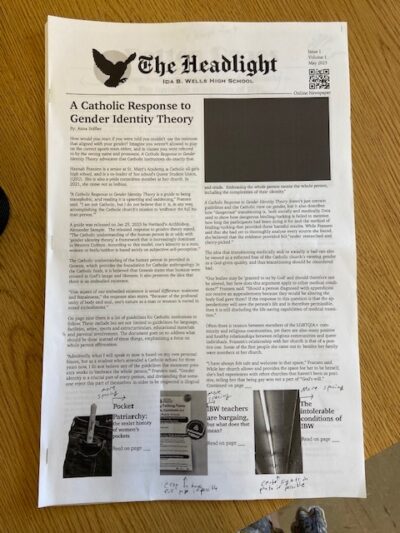
But at Ida B. Wells, The Headlight is shining brighter and brighter, thanks in great part to the legacy of a beloved journalism adviser, Andrea Patton, who died last summer. To listen to the editors talk about her is to understand the power a single teacher can have on the life of a student. (When Mr. Hawkey, my hard-ass 11th-grade English teacher, said to me as I left his classroom that last day of school, “You are a writer,” I was transformed.)
It also is to understand what journalism can mean to this next generation.
“She was constantly pushing us to have difficult conversations and think deeply about the words we were writing,” wrote one of the editors, Cate Latimer, in a special tribute issue to Patton produced this spring. “She challenged my understanding of journalism…I was hooked.” Another of the editors, Sierra Donis, wrote that she learned that “we write …to ‘shine the light of truth’ on things that we hold love or concern for.” Editor Meira Fiber-Munro stated simply and powerfully: “She changed my life.”
It was not lost on Patton, nor is it lost on these student journalists, that their school is named after the crusading investigative journalist, educator and early leader of the civil rights movement who dedicated her career to combating prejudice and violence. What had been Woodrow Wilson High School since the mid-1950s was renamed for Ida B. Wells in early 2021 in response to community pressure after the murder of George Floyd. There is a strong sense among these students, fueled by the energy generated by Patton, that their renamed school should be home to a strong, vibrant, socially conscious newspaper.
Mature stories, ethics and relationships
On this day, Zoe Toperosky continues her pep talk to colleagues in the classroom-turned-newsroom. All the copy has to be in by Friday, which is two days away, she tells the staff. There are groans. Then, one girl says, “Hey, people are actually talking about the paper.”
“Really?” says Zoe, delighted. “That is so cool.”
“Yeah,” says a guy in the back, “I heard that one story was actually used as an assignment in a class.”
I see Andrea Patton’s legacy play out in front of me not only in the sophistication of the stories these kids are tackling but also in the maturity and sensitivity of the editors. I listen as Zoe and Meira talk to one of the reporters. They had come to her desk rather than call her over to theirs; the conversation that follows unfolds as an anti-power play that removes some of the stress from a stressful encounter. The hard truth is that the editors have decided not to run the story, a lengthy piece the reporter cares deeply about. The story in question focuses on the mental health of a particular teacher who took a self-care and therapeutic leave.
“I know that he freely gave you this story,” Zoe says, keeping her voice low, leaning in. “But it feels like an invasion of privacy.”
The story exposes personal details about the teacher, she explains. The writer is clearly crestfallen. She tells Zoe and Meira, who is quiet but present to give Zoe back-up if needed, about how good the interview was, how important the story is. “Yes,” says Zoe. “Exactly. This is a super important issue — teachers’ mental health. The story needs to broaden out to that.”
I don’t know what impresses me more: the editorial savvy behind the awareness of the bigger issue (these are 17-year-olds, remember) or the ethical sensitivity to invasion of privacy or the way Zoe handles the whole encounter. She and Meira exchange glances. It is clear the team of editors has agonized over this.
“You worked hard,” Zoe says, needing to move on to the next story meeting. “I know this is frustrating.” The reporter is staring down at her laptop, her eyes scanning the story that will not be published in this final issue of the school year. “You should be proud of it,” Zoe assures. “Let’s make this a big story next year.”
Principles with purpose
Plans are already forming for next year. Among them, plans to go out into the community to sell advertising to support more print issues of the paper. This year, in part due to lack of budget and the transition from Patton to a new adviser — English teacher Haven Kaplan-Miner, who the kids call “KM” — the paper existed mostly online. The exception was the “Patton Pages” tribute issue and this final issue being readied for print in early June. The school does not fund the newspaper, although it does support two journalism elective classes, one introductory and one focused on the creation of the paper.
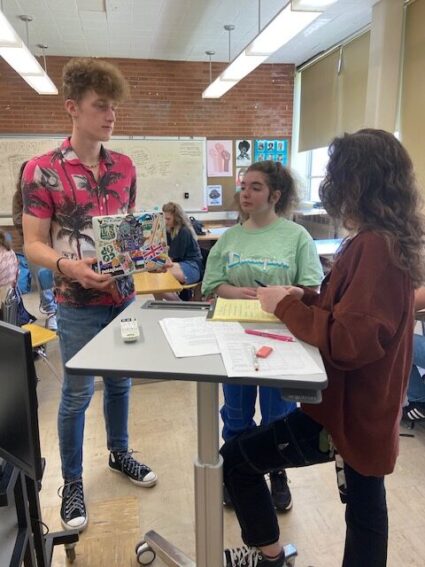
The 90-minute editorial session continues. Meira stops by the desk of a reporter who has researched and written a story about a lithium mine on the Oregon-Nevada border. They go over they edits, line by line. Then she confers with a reporter who has written a story about the future of electric cars. (He admits later, when I ask, that if he could buy any car, it would be a Corvette.) Now Zoe is in the front of the room leading a brainstorming session to generate ideas for the final page of the issue, which will be a recap of the year’s progress and a shout-out to the seniors.
Meanwhile, I talk with another reporter who has written a piece about porn star Stormy Daniels and former President Donald J. Trump. I ask him about his own politics and how it might have affected the story. His response would warm the heart of all hard-working journalists everywhere:
“I put my biases aside to gather the information. I want people to know the facts so they can make informed decisions. That’s my job.”
Others who had been schooled in Andrea Patton's vision of journalism told me similar things:
"I am passionate about journalism because it brings voice to paper, it gives communities a voice and gives people a reason to listen. I am proud to be able to report on the state of my community and the issues most prominent, hoping that it does make a difference. I look forward to continuing this endeavor for many years to come." ~ Zoe Toperosky, co-editor
"I love working in journalism because it's a creative career path with so much versatility in the same environment that offers the opportunity to build long lasting relationships and explore the world. I also really enjoy the collaborative aspect of working in a newsroom that motivates finding and helping to tell truths. My late advisor Ms. Patton always emphasized that journalists have a critical role in upholding democracy and taught that there is space to advocate for social justice within journalism while reporting without bias." ~ Meira Fiber-Munro, co-editor
"Journalism is everything I’ve ever wanted in a career: listening, talking, writing, storytelling…all my passions in one place." ~ Julia Boboc, former editor now studying journalism at the University of Oregon
That’s what they are learning. That’s what they are practicing. That’s why journalism is — and needs to be — a vital part of high school education. These student journalists are our future.
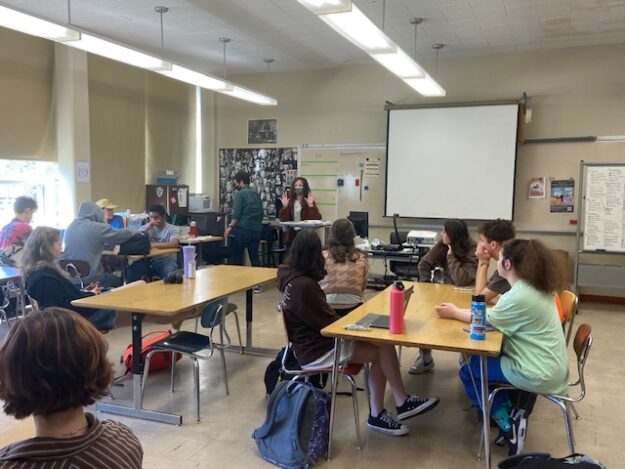
* * *
Lauren Kessler is an Oregon-based narrative journalist, teacher and author of 15 nonfiction books.
